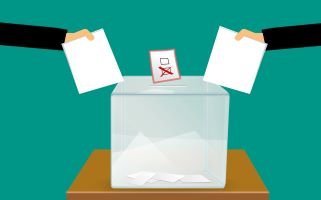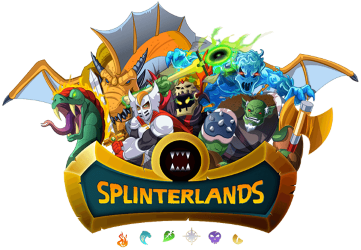Splinterlands Economics: Government
Hello everyone! We are back again today with another edition of Splinterland Economics - a series in which we introduce a basic economic concept and then apply it to Splinterlands. If this is your first time reading, just to tell you a little bit about myself: my day job is in an unrelated area but I consider myself a little bit of economics nerd - I read a little (or maybe way, way) more news than I should, double majored in econ, and am obsessed with optimization. I love the way Splinterlands is equal parts card game and resource allocation game. My goal with these articles is to share a little bit of what I know with you all.
Our subject today is a little bit of a dirty word in crypto, because it has aspects which can become closely related to centralization and many of the reasons why people have turned to crypto in the first place. And yet, it also plays an important or even necessary role in many aspects of an ecosystem. Today, we will be talking about Government!

What is a Government?
Some people may hear the word "government" and immediately think of bureaucrats telling them what to do. And while this does have a degree of truth to it, today we will instead be focusing on the role of government in an economy. If you are already familiar with public goods or the tragedy of the commons, you might recall that there are differences between what is best for individuals and what is best for a society as a whole. Government (at least in theory) plays a role in helping people to do what is best for society as a whole, when they might otherwise perform actions which are beneficial to themselves but very harmful to others. Government can also coordinate large projects or undertakings which may otherwise be too difficult for an individual to accomplish - think of maintaining a military for national defense, or large infrastructure projects
Governments are able to influence a country's economy through fiscal (spending) or monetary (money supply) policy. In some cases they are also able to set regulations on what people are allowed or not allowed to do. Do note that from country to country (or ecosystem to ecosystem) there may be enormous differences in how a government is organized, how decisions are made, and who is able to make them. However there is nearly always SOME sort of government - if there wasn't then there would be absolutely no rules at all - we would call that an anarachy. Much of the debate over government is to what extent a government should be able to take actions and exert influence on individuals - most of us would think that some amount is beneficial or even necessary, but it is a matter of how much power the government should wield - as well as how those actions are decided in the first place.
How do we apply it to Splinterlands?
While Splinterlands has a goal of decentralization, that does not mean that there is no role for government. In fact, the main appeal of a DAO, which is central (hah!) to the developer's long term plan for Splinterlands, is that there IS a government, but it is a decentralized one which is controlled by players who have SPS staked, as opposed to a centralized game company. For anyone who is planning on participating in Splinterlands for a significant amount of time, it is important to understand how this governance will work - the longer a player participates in the ecosystem the more opportunities they should receive to accumulate SPS which may be staked in order to have a larger voice or vote in the DAO, which may be thought of as the future Splinterlands government. Despite its incomplete status, the DAO has already had a role in making important economic decisions such as how ranked reward payouts are determined and which types of currencies are able to be used in card purchases.
While a game controlled by a DAO is the end goal, it is a work in progress. The eventual goal is a decentrally governed game, but many decisions are controlled by the Splinterlands developers, and will likely continue that way in the future as work and experimentation continues. In the short to medium term that is probably for the best - tasks and decisions such as getting the basic infrastructure for the DAO off the ground and managing early set and gameplay releases are tasks which are likely beyond the means of your average player. Splinterlands is groundbreaking in many ways, and while that means that developer mistakes are likely (and perhaps even inevitable!), it also means that if or when the developers' vision is realized we will have a game which is unlike anything which has come before - in a good way! Players should have a voice in the game's direction, and matters should be handled transparently - both of these objectives should be helped significantly by a fully functioning DAO.
Why should we care?
Splinterlands is a game where government is an integral part of the ecosystem. Being aware of what exactly that government is and how it works gives us a better understanding of what exactly we are gaining by investing in the game, participating in ranked battles and brawls, and staking all of that SPS. It also allows us to appreciate the difficulties and potential payoffs of what the developers are attempting to accomplish.
Outside of Splinterlands, understanding how governance and government works is just as important - whether you think that governments are accomplishing some useful things, or just wish that everyone would just leave you alone. If you are lucky enough to be able to vote, then you are able to participate in that governance, and knowing how it works will allow you to make more informed decisions.
Thank you so much for reading all the way to the end. Interested in seeing some more of my writing in the future? Be sure to give me a follow! In the meantime, if you'd like to see some of my recent posts:
This is a Prickly One - Using Death in Battle! - Last week's battle challenge, featuring the Death splinter!
Splinterlands Economics: Purchasing Power - An overview of the concept of purchasing power, and how we can apply it to Splinterlands!
Splinterlands Economics: Hedging - An introduction to the concept of hedging, and how we can apply it to Splinterlands!
Thinking about giving Splinterlands a try but haven't signed up yet? Feel free to use my referral link: https://splinterlands.com?ref=bteim, and be sure to reach out to me if you have any questions!
All images used in this article are open source and obtained from Pixabay or Unsplash. Thumbnails borrowed with permission from the Splinterlands team or made in Canva.




https://twitter.com/1467643672636190720/status/1611571372362452993
The rewards earned on this comment will go directly to the people( @bteim ) sharing the post on Twitter as long as they are registered with @poshtoken. Sign up at https://hiveposh.com.
Thanks for sharing! - @alokkumar121
